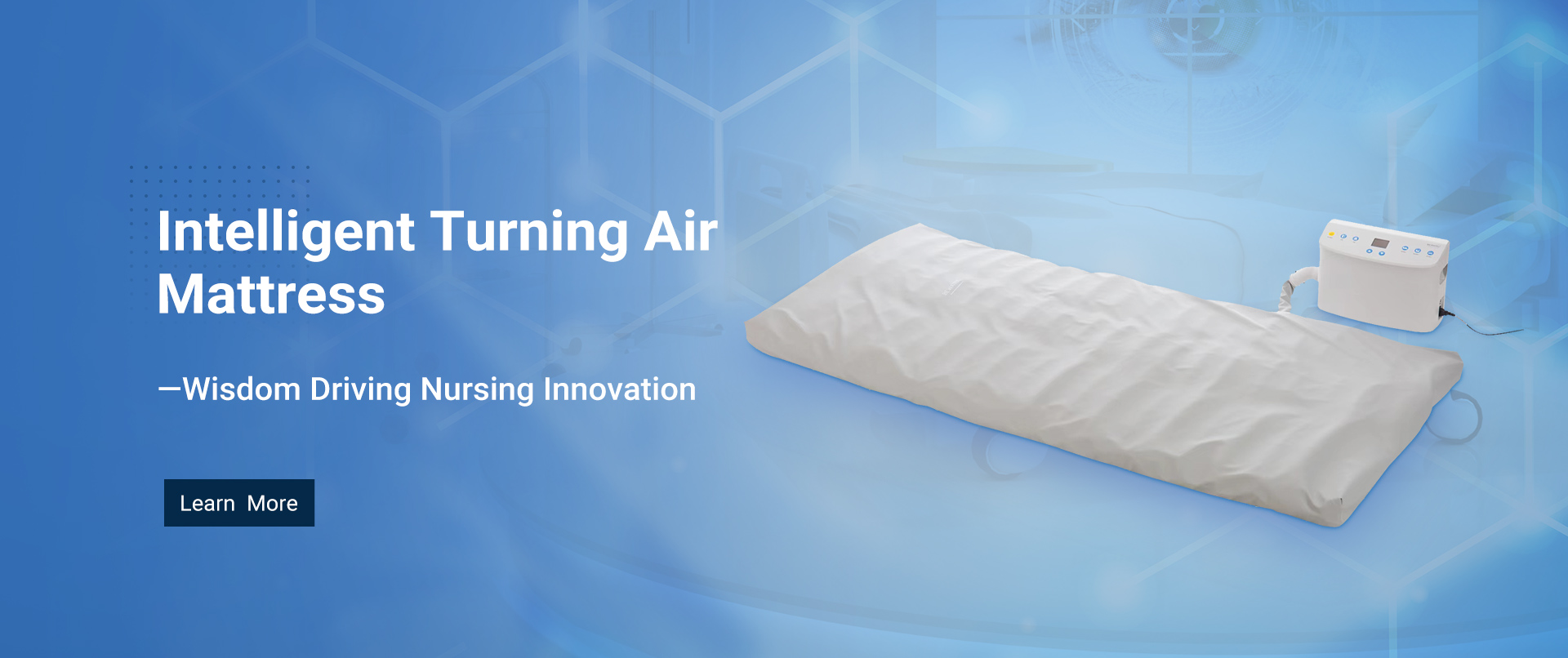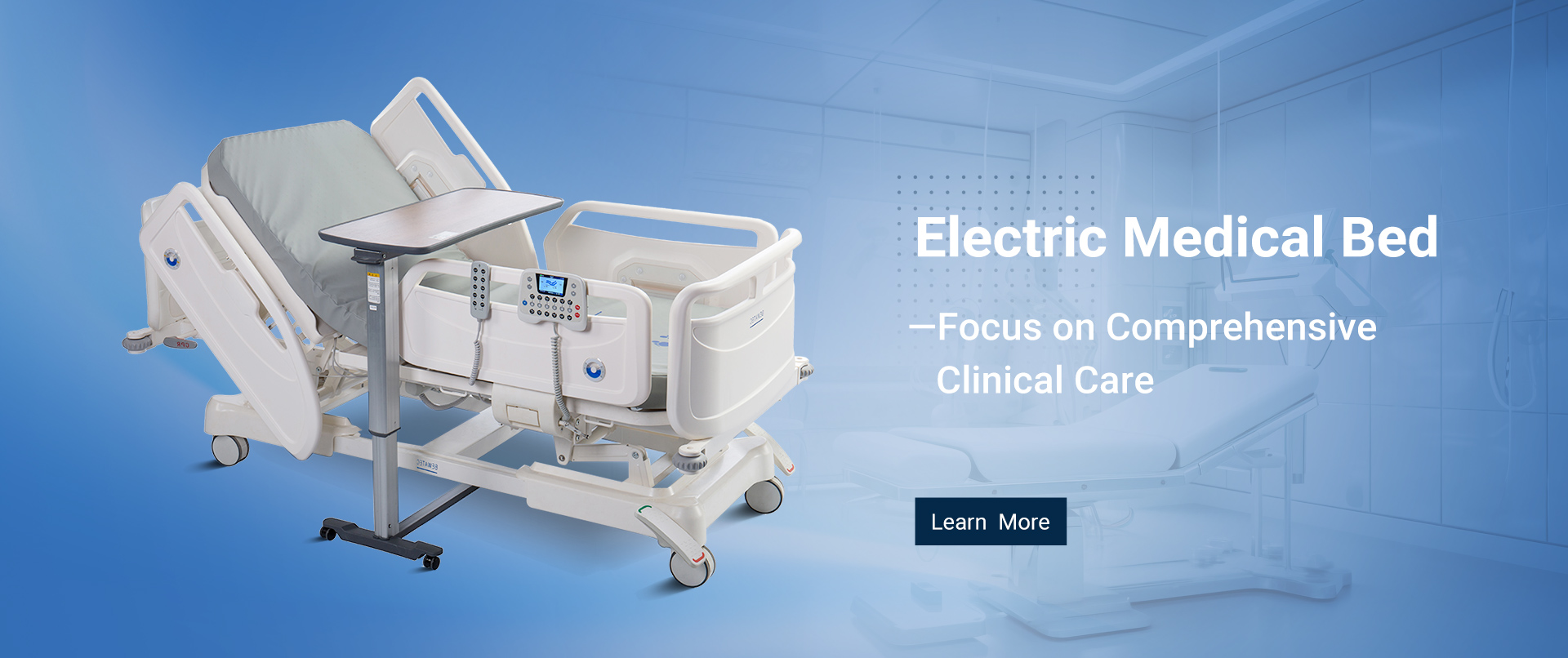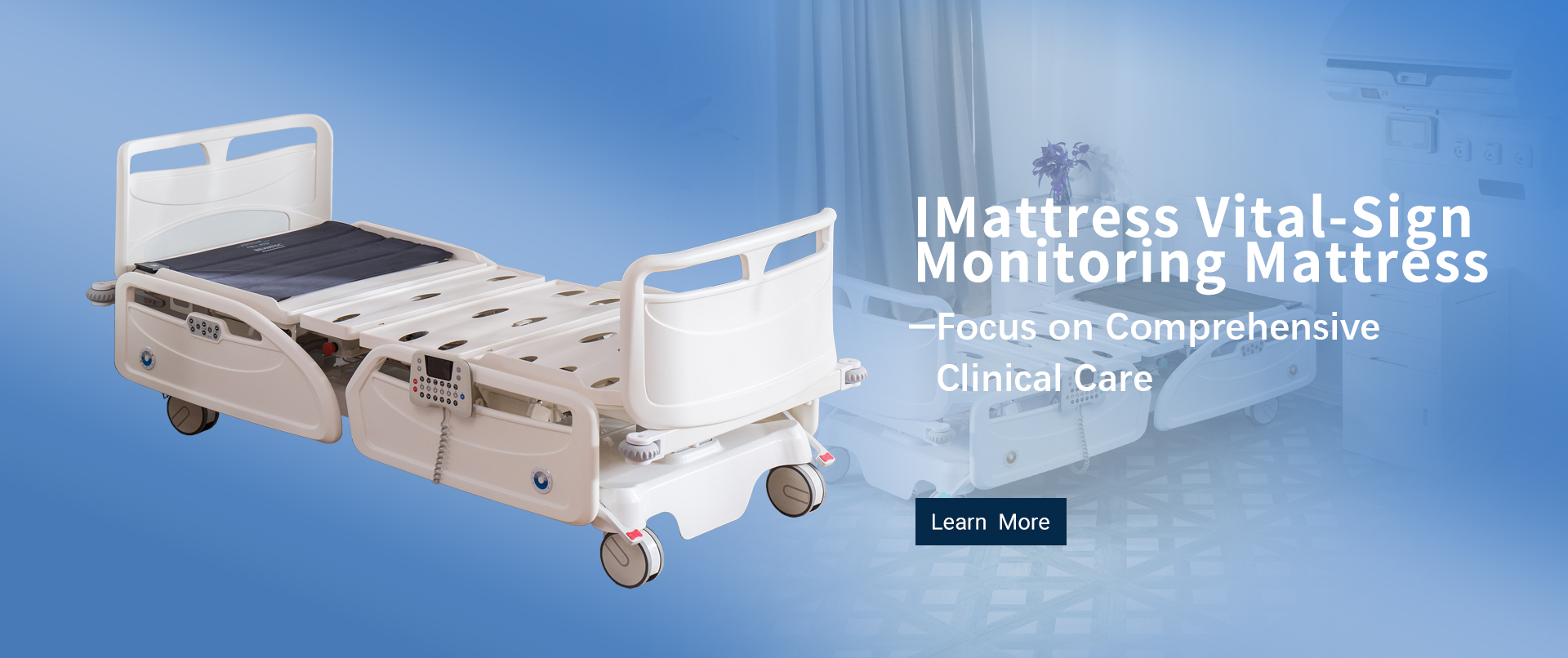
Revolutionizing Healthcare with Best China Manual Three Function Sickbeds in the 2025 Technology Landscape
Table of Contents
- Revolutionary Features of Three Function Sickbeds Transforming Patient Care
- Impact of Smart Technology on the Efficiency of Healthcare Facilities in 2025
- Key Statistics on Patient Recovery Rates with Advanced Sickbed Technologies
- Cost-Benefit Analysis of Investing in Manual Sickbeds for Modern Hospitals
- Future Trends in Bed Design: Innovations and Patient Comfort in 2025
- Integrating Telemedicine with Sickbeds: Enhancing Remote Patient Monitoring Solutions
- Enhancing Patient Comfort and Safety: Exploring the Benefits of the Iaso Series Three-Function Manual Bed with HDPE Siderails
- FAQS
- Related Posts
As we look ahead to 2025, the healthcare world is really on the verge of some exciting changes, especially when it comes to how patient care is handled. There's a growing push for better healthcare infrastructure, and it's no surprise that the global market for hospital beds is projected to hit around $5.9 billion by then. A lot of that growth is fueled by tech innovations and a bigger focus on patient-centered approaches. One key player in this scene is the 'China Manual Three Function Sickbed Customized Manufacturers'—they're making a real difference by offering customizable beds designed to meet individual patient needs. Take Bewatec (Zhejiang) Medical Device Co., Ltd., for example — they’re leading the charge by zeroing in on smart medical solutions and pushing for the digital transformation of healthcare. They’re all about creating care experiences that are comfortable, safe, and tailored to each person. Ultimately, Bewatec’s goal is to change how patients experience care and to strengthen its position as a global leader in specialized smart medical solutions—that’s pretty exciting stuff!

Revolutionary Features of Three Function Sickbeds Transforming Patient Care
Hey, have you heard about the really exciting progress happening with three-function sickbeds? Industry folks are saying that by 2025, these beds are about to change how we care for patients big time. Basically, they’re designed so you can easily adjust things like height, backrest, and knee positions—it's not just about comfort, though that’s a plus. These features actually make a real difference in health outcomes. For example, a recent report from the WHO pointed out that getting patient positioning right can cut down the risk of pressure ulcers by up to 60%. That’s pretty impressive and shows just how important these innovations are in hospitals and clinics.

And it gets even cooler—these sickbeds are starting to come with smart tech built in. A recent survey from Grand View Research says the healthcare robotics market could hit around $20 billion by 2025. That basically means automation is taking over more and more, and these beds are right in the middle of it. With integrated monitoring, doctors and nurses can keep an eye on vital signs in real-time, which helps them respond faster during emergencies. In the end, it’s all about saving lives and making the whole care experience smoother for everyone. Honestly, as technology keeps moving forward, these advanced sickbeds are going to be a total game-changer for healthcare, no doubt about it.
Impact of Smart Technology on the Efficiency of Healthcare Facilities in 2025
So, by 2025, the healthcare scene is set for some pretty exciting changes, all thanks to smart tech—especially when it comes to managing healthcare facilities. Did you know that the global market for facilities management is expected to nearly double, jumping from around $42 billion in 2024 to about $85 billion by 2033? That just shows how much attention and innovation are piling into healthcare environments. It’s clear that adopting cutting-edge solutions isn’t just a trend anymore; it’s a necessity to keep up with the fast-paced changes and to improve both efficiency and patient care.
Thanks to smart technology, hospitals and clinics aren’t just relying on old-school methods anymore. Take smart beds, for example—they automatically adjust and monitor patients, making life easier for caregivers and more comfortable for patients. Leading companies in smart building solutions are really pushing the envelope, creating systems that are more connected and personalized. And amid all this, Bewatec (Zhejiang) Medical Device Co., Ltd. is doing its thing—really focusing on digital transformation. They’re coming up with smart medical solutions that put patient comfort and safety front and center, helping shape what healthcare will look like in the years to come.
Key Statistics on Patient Recovery Rates with Advanced Sickbed Technologies
As we head into 2025, the healthcare scene is really poised for some exciting changes, especially with the rollout of cutting-edge sickbed tech that's aimed at helping patients recover faster. Interestingly, the market for hair transplant tech is expected to hit around $358.5 million by 2025, growing steadily at about 3.6% each year, and it’s projected to skyrocket to roughly $4.76 billion by 2033. This rising demand shows just how much people are focusing on recovery solutions that not only help with healing but also make patients feel more comfortable.
At the same time, rehab robotics are really taking off. The market is set to jump from about $457.5 million in 2024 to over $1.43 billion by 2031—that’s a compound annual growth rate of nearly 17.7%. It’s pretty clear that we’re seeing a real push toward innovative tools that boost physical recovery and mobility for patients. Plus, market for rehab robotic gloves is expected to grow from $124.6 million in 2025 to a solid $345.6 million by 2033, at a healthy CAGR of 13.6%. All of these numbers really highlight how tech is transforming patient care and making recovery outcomes better in healthcare today.

Cost-Benefit Analysis of Investing in Manual Sickbeds for Modern Hospitals
In the quickly changing world of healthcare tech, hospitals are always on the lookout for cost-effective ways to boost patient care. One option gaining popularity is manual three-function sickbeds. These beds are pretty versatile and easy for staff to manage, making things simpler on their end. Plus, patients tend to get more comfortable during their stay. When you do the math, investing in these manual beds can really save money in the long run, especially since high-tech electric beds tend to be pricey upfront and need lots of maintenance.
On top of that, manual sickbeds are super useful in places where power isn't always reliable or when quick repositioning is a must. They help streamline hospital routines—meaning staff can easily adjust the beds without fussing over electrical controls, which cuts down on potential equipment problems. As healthcare systems work to deliver top-quality care on tighter budgets, choosing manual sickbeds seems like a smart move that hits both financial targets and patient needs. It’s a way for hospitals to stay efficient and sustainable, now and in the years just ahead of us leading up to 2025 and beyond.
Future Trends in Bed Design: Innovations and Patient Comfort in 2025
Looking ahead to 2025, it’s pretty exciting to see how healthcare design is expected to totally transform. One of the biggest shifts is in sickbed tech—stuff that's all about making patients more comfortable and improving their overall experience. Nowadays, healthcare pros are really focusing on patient-centered care, and that shows up in the way manual sickbeds are being designed.
Imagine beds with ergonomic features and customizable options—patients can tweak their positions easily, which means a more comfortable rest and faster recovery. It’s a small change that can make a huge difference in how people feel during their hospital stay.
On top of that, new materials and smart tech will really change the game. We're talking lightweight, sturdy, and hypoallergenic materials that not only boost comfort but also help keep things cleaner and safer for everyone. Plus, smart features like pressure sensors or automatic adjustments could monitor patient health on the fly, so caregivers can jump in quickly if something's off. Overall, by 2025, all these innovations in bed design are set to make healthcare more humane, effective, and patient-friendly—definitely a step in the right direction!
Integrating Telemedicine with Sickbeds: Enhancing Remote Patient Monitoring Solutions
So, integrating telemedicine into sickbeds really marks a huge step forward in remote patient monitoring. It’s like we're on the brink of making healthcare more responsive and efficient than ever before. These days, sickbeds with built-in telehealth tech mean doctors and caregivers can keep an eye on patients’ vitals pretty much from anywhere. No more waiting around for check-ups—timely interventions become a lot easier, which not only keeps patients safer but also helps ease the pressure on hospitals and clinics. That way, resources can be used more wisely.
And let’s not forget about those manual three-function sickbeds—those are designed to keep patients comfortable and well-cared for. Thanks to some clever telecommunication tools, healthcare pros can keep tabs on patients’ conditions all the time without needing to be physically in the room constantly. That’s a game-changer, especially for folks with chronic conditions or those healing up after surgery. It means they can get expert care while staying cozy at home or in familiar surroundings. Looking ahead to 2025, the combo of telemedicine and these smart sickbed techs could really shake things up, setting new standards in patient care and totally transforming healthcare as we know it.
Enhancing Patient Comfort and Safety: Exploring the Benefits of the Iaso Series Three-Function Manual Bed with HDPE Siderails
In today's healthcare environment, patient comfort and safety are paramount, particularly in general wards where patients' needs are diverse and dynamic. The Iaso Series Three-Function Manual Bed with HDPE Siderails stands out as an innovative solution designed with these critical needs in mind. Its high-standard design showcases a commitment to exceptional functionality while ensuring that care providers can offer focused attention to each patient. This approach aligns with findings from industry reports indicating that environments tailored for comfort can significantly improve patient satisfaction scores, with 70% of patients reporting enhanced recovery experiences when comfort is prioritized.
The integration of HDPE siderails further elevates the safety measures associated with the Iaso bed. According to data from the American Hospital Association, patient falls in hospital settings can lead to serious injuries and increased healthcare costs, prompting a relentless focus on safety features in bed design. The Iaso bed's robust siderails not only provide physical support but also introduce a sense of security, enabling patients to feel more at ease during their stay. Additionally, the multifunction capability of the bed enhances its adaptability in the high-demand settings of general wards, where quick adjustments can lead to improved care delivery and responsiveness to patient needs.
Furthermore, the bed's design incorporates evidence-based practices that align with findings from hospitals that have adopted similar high-quality equipment, showing an overall decrease in adverse events and improved care outcomes. By investing in such advanced medical equipment, healthcare facilities are not just fulfilling regulatory standards but are actively creating environments that foster healing and comfort, ultimately benefiting both patients and providers.
FAQS
: Advanced sickbed technologies are innovative healthcare solutions designed to enhance patient recovery rates, providing features that improve comfort and facilitate better monitoring of patients.
The hair transplant technologies market is estimated to reach $358.49 million by 2025, with an anticipated annual growth rate of 3.6%.
The rehabilitation robotics market is projected to grow from $457.5 million in 2024 to over $1.4296 billion by 2031, reflecting a compound annual growth rate (CAGR) of 17.68%.
Rehabilitation robotic gloves are expected to rise in market value from $124.61 million in 2025 to $345.6 million by 2033, indicating their importance in enhancing physical recovery and mobility for patients.
The integration allows caregivers to monitor patient vitals remotely, facilitating timely interventions, enhancing patient safety, and optimizing resource allocation within healthcare facilities.
Manual three-function sickbeds are designed to maximize patient comfort and care, allowing for easy adjustments and better overall support during recovery.
Telemedicine enables continuous assessment of patient conditions remotely, allowing patients with chronic illnesses to receive expert care without the need for constant physical presence in healthcare settings.
Advanced technologies are expected to revolutionize patient care, improve recovery outcomes, and set new standards for healthcare delivery as we move towards 2025.
Related Posts
-

Navigating the Future of Best Medical Beds Manufacturers in 2025 with Technological Innovations Guide
-

Your Ultimate Guide to Best Wifi and 4/5g Connected Health Monitoring Solutions
-

5 Key Factors Driving the Growth of Best Hospital Bed Manufacturers in China
-

Leading the Charge: China’s Premier Digital Health Monitoring Innovations for Global Markets
-

How to Choose the Best Medical Bed Manufacturer for Your Healthcare Facility
-

China's Smart Manufacturing Leading Global Sales in Top Hospital Technologies









